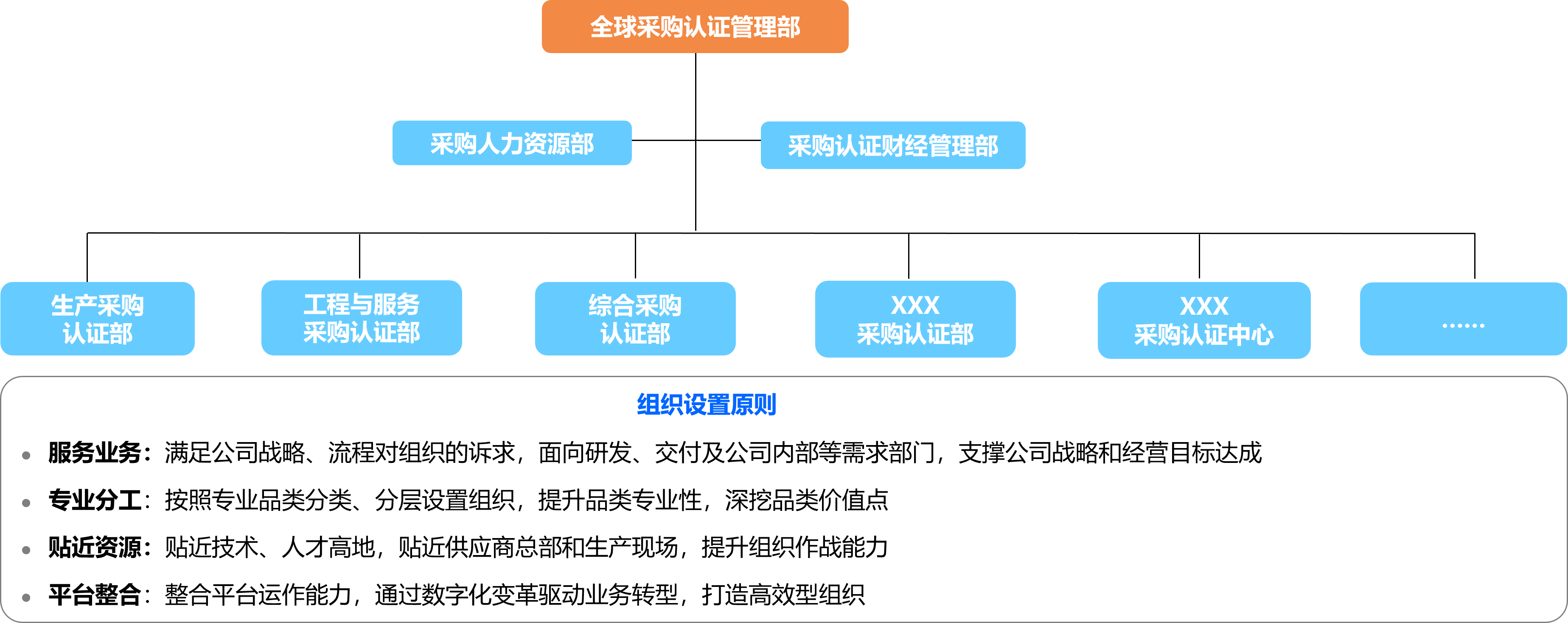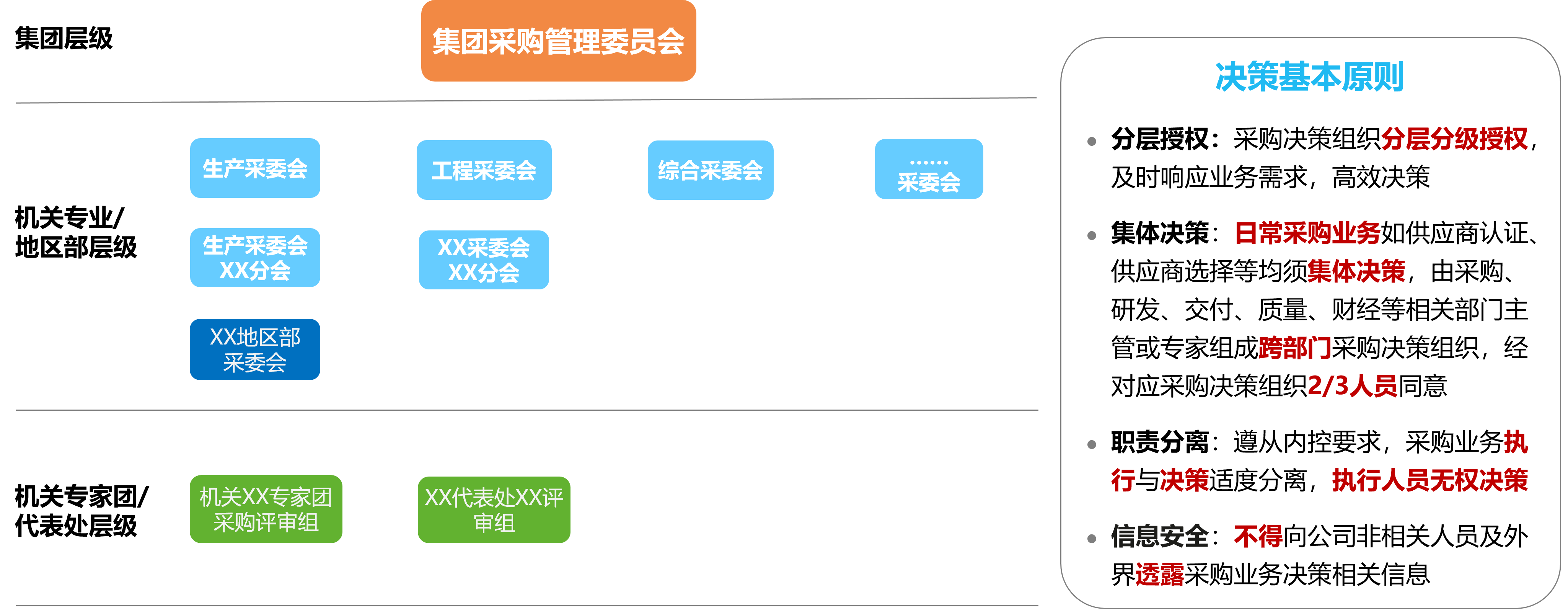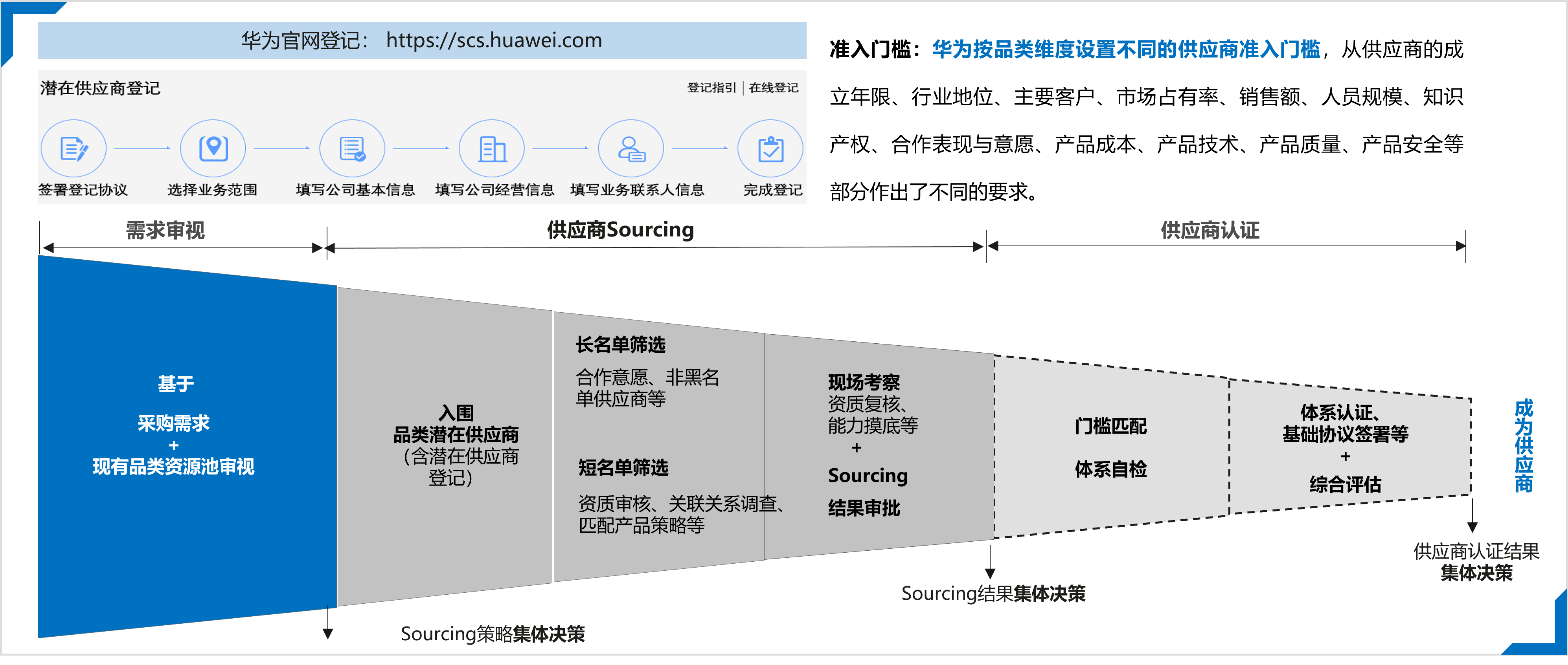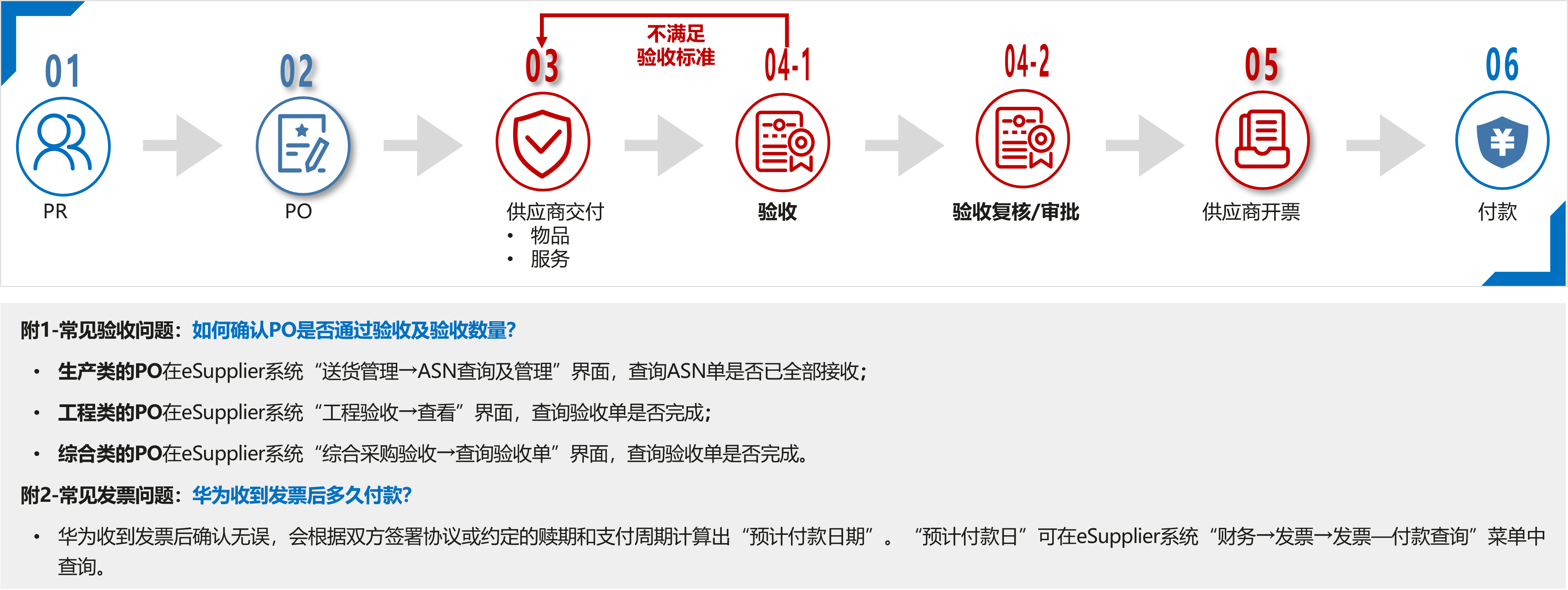I. Huawei's procurement organization structure
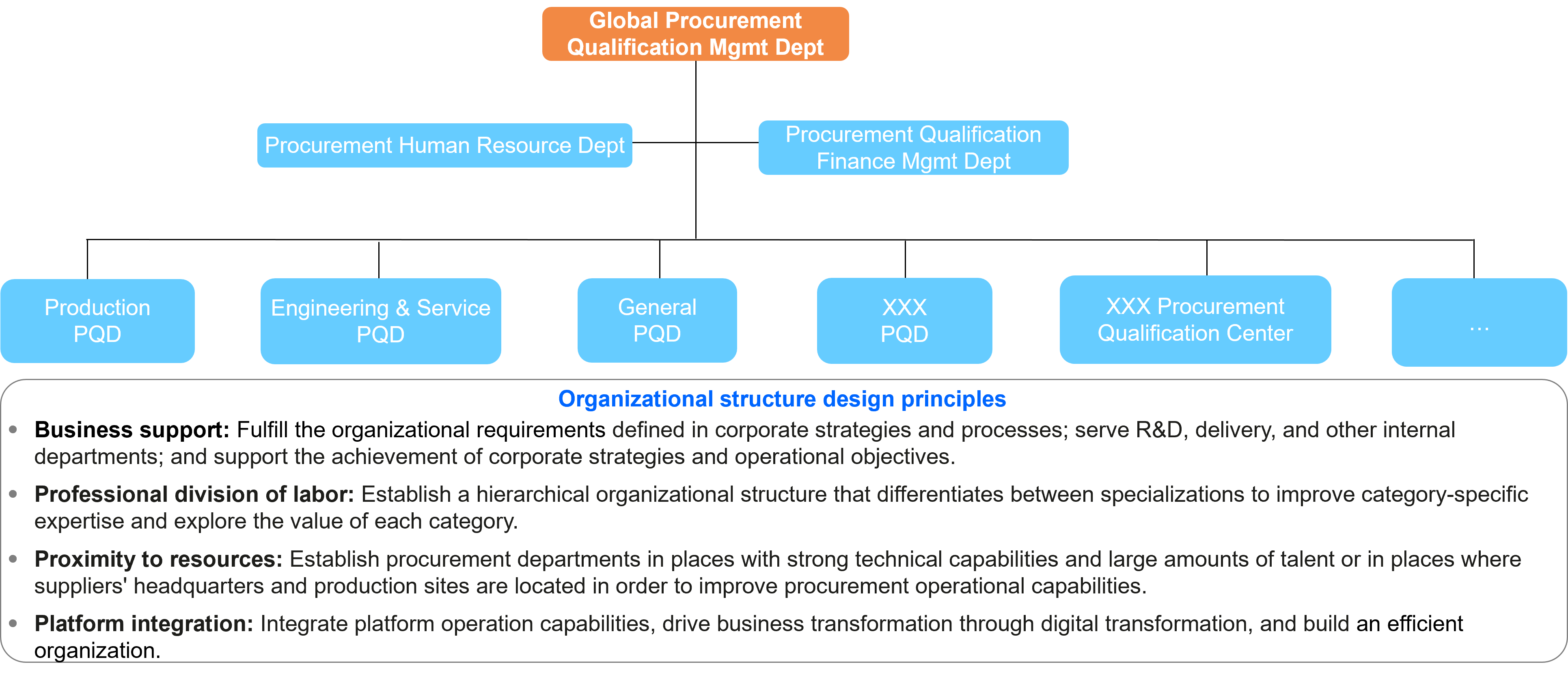
II. Huawei procurement hierarchical decision-making model
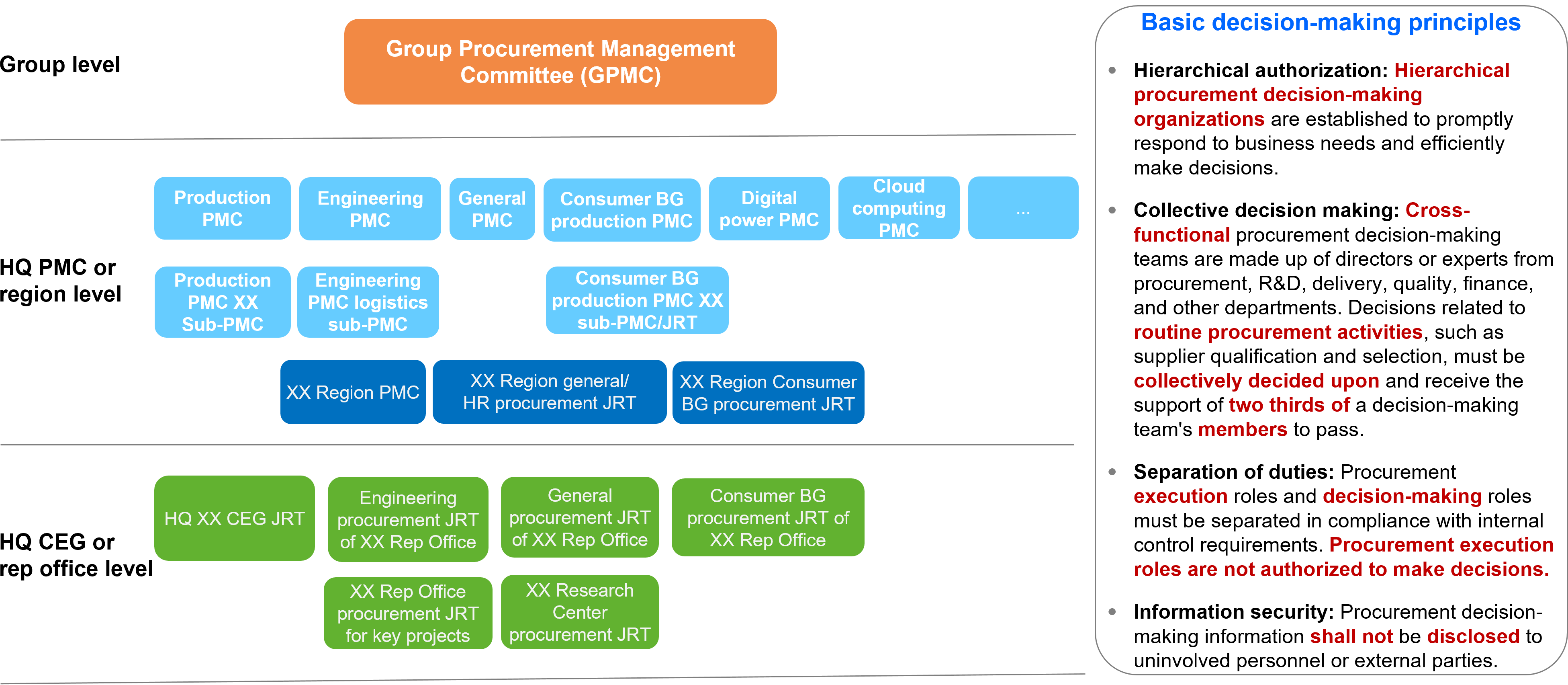
III. Top questions from suppliers
Q1:How do we become a Huawei supplier? What are the steps?
A1:
1.Huawei brings in suppliers to meet specific business procurement requirements based on the availability of existing resources.
2.Huawei proactively identifies a list of potential suppliers by comprehensively analyzing multiple factors such as industry ranking and cooperation willingness. Partners who are willing to cooperate with Huawei can also register their information on Huawei's official website.
3.Huawei sets different qualification thresholds for suppliers by category. Potential suppliers that meet the threshold requirements have an opportunity to become an official supplier after undergoing Huawei evaluation processes, such as the supplier sourcing and qualification process.
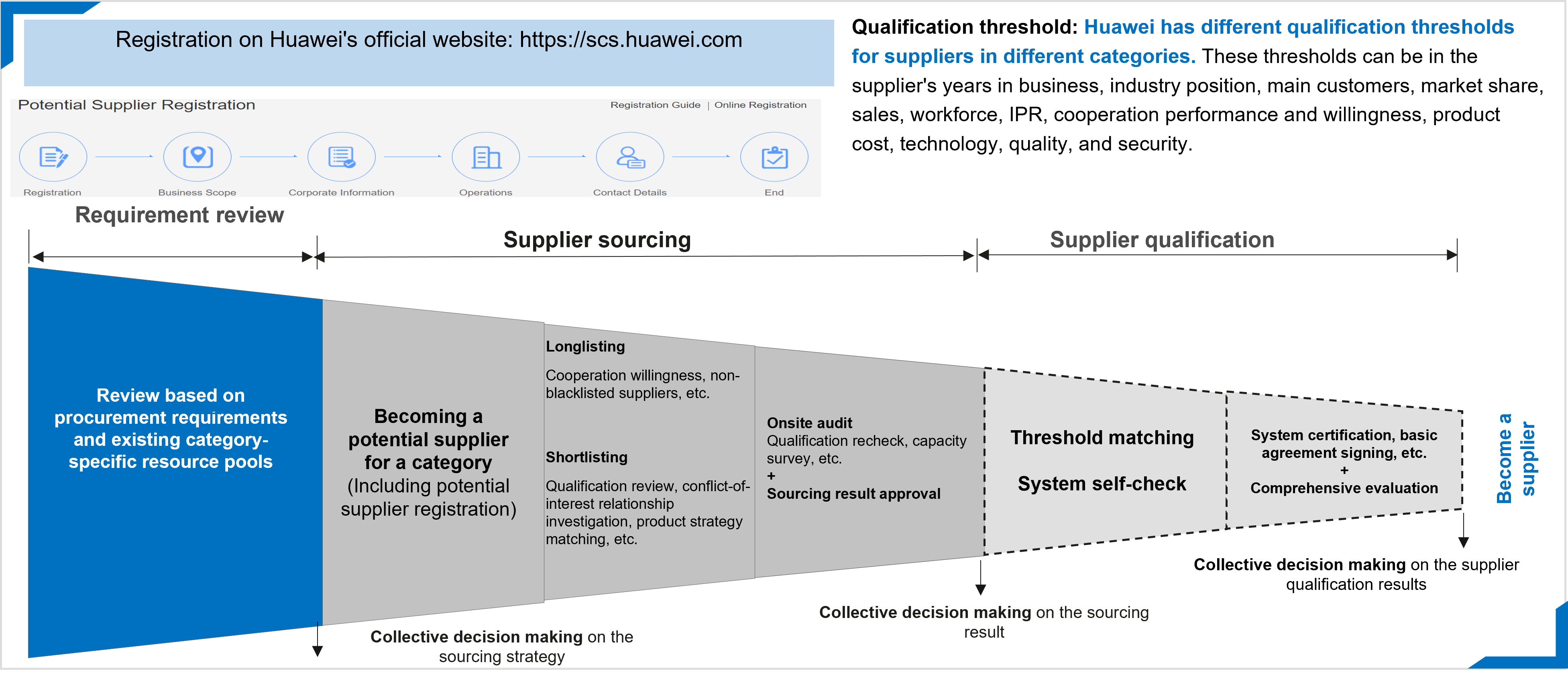
Q2:What are the steps of Huawei's supplier system certification? How long does it take to issue the onsite system audit result?
A2:
1.Huawei's supplier system certification involves multiple steps, including supplier self-checks, onsite system audits, and collective decision making by the system review team.
2.The standards and requirements for Huawei's supplier system certification cover quality systems, manufacturing processes, social responsibility, occupational health and safety, and cyber security.
3.Huawei's SQE notifies suppliers of their certification results by email. The specific notification time varies based on the certification status and the completion of any required corrective actions. Generally, results are issued within three weeks of the onsite system audit. You can contact your corresponding SQE to inquire about the certification results.
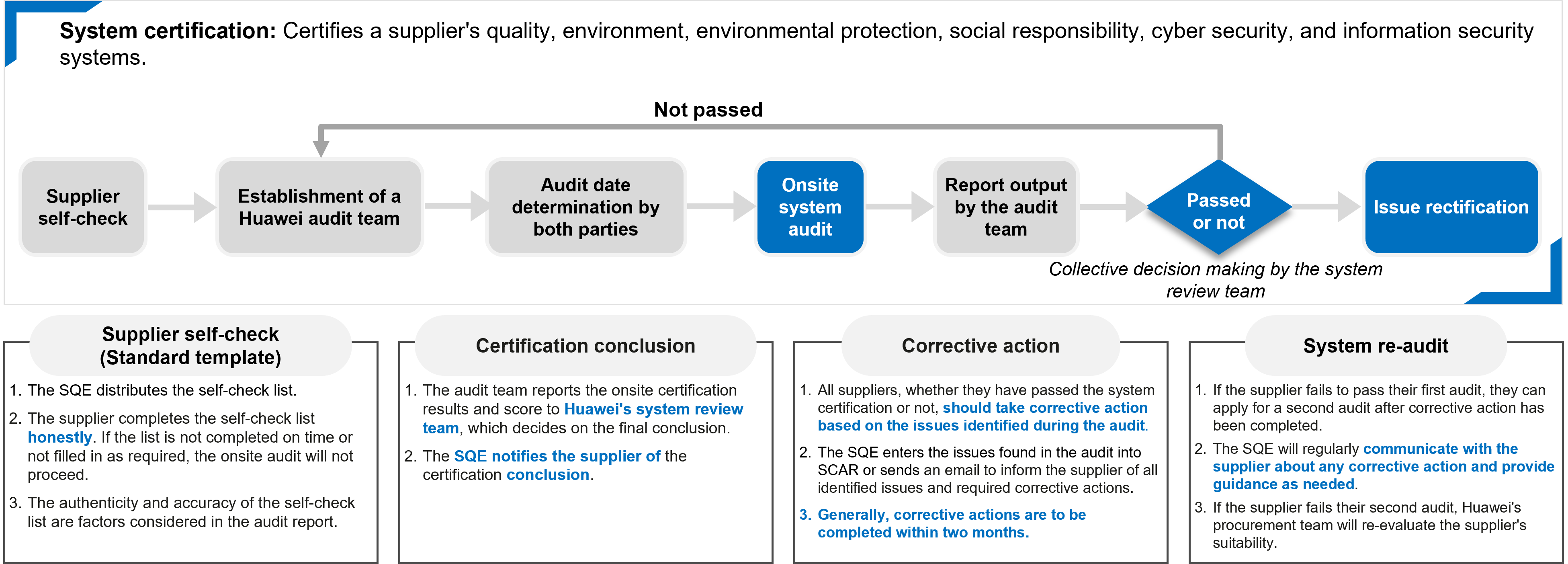
Q3:How do we participate in Huawei projects after we are qualified?How do we win POs for the certified materials?
A3:
1.After supplier qualification is completed, Huawei carries out material sourcing and qualification based on project requirements to ensure that the materials provided by suppliers meet the required specifications.
2.After material sourcing and qualification, Huawei selects the most suitable suppliers in a fair and just manner based on actual project requirements by comprehensively evaluating elements such as technologies, quality, and costs, and signs contracts and places POs based on the approved supplier selection results.
3.Supplier selection is completed through collective decision making by procurement decision-making organizations according to rules formulated before their execution, with the decision-making process properly archived to ensure fairness, justness, and transparency.
4.A supplier that has not been selected in any project for a long time may contact the corresponding CEG Buyer of Huawei for consulting.

Q4:How will we be paid after delivery according to the contract? What are the common factors that affect payment?
A4:
1.Once acceptance and billing are completed according to the contract, Huawei issues payments on the first centralized payment date when the payment term is due.
2.Acceptance and billing must be completed before payment.
3.Suppliers can check the acceptance and payment status in the eSupplier system at https://scs.huawei.com/supplier

Q5:How do we become certified in more categories to expand cooperation with Huawei?
A5:
1.Suppliers should first ensure the delivery and quality of existing categories and projects. Good standing in existing categories is required for those seeking to expand their cooperation with Huawei.
2.Huawei reviews the requirements for expanding the category-specific resource pool, initiates supplier sourcing and qualification, and gives more cooperation opportunities to strategic/preferred suppliers based on its actual business needs and supplier portfolio.
3.Suppliers can only expand the scope and scale of their cooperation with Huawei into multiple categories if they have received the necessary certifications and relevant project requirements exist.

Q6:What should we do if Huawei's non-procurement personnel, such as R&D and delivery personnel require product changes without notifying the TQC (of the Global Procurement Qualification Mgmt Dept)?
A6:
1.All product change notifications (PCNs) for which the conclusions released in Huawei's IT system (eSupplier) or provided by the TQC are considered valid PCNs. Suppliers may not accept or execute any PCNs issued through other channels (including those received from Huawei personnel that are not with the TQC, such as R&D and delivery personnel).
2.Upon receiving a change request from non-TQC personnel, such as R&D and delivery personnel, suppliers should immediately notify Huawei's TQC. The TQC will arrange for relevant internal personnel to initiate a formal PCN review and verification. After the verification, the PCN results will be issued.
3.Changes involved in SPCNs include but are not limited to component end of production (EOP), function change, performance change, appearance change, and process change. If an SPCN application needs to be submitted, the change application should at least include the PCN number, change description, change handling solution, related documents/data, change notification, and related date.
Note: SPCN: Supplier product change notification
4.Any supplier who violates the PCN Agreement will be liable for compensation or liquidated damages in line with the Indemnity Agreement for Supplier Quality and Environmental Issues.
Q7:Will Huawei designate lower-level suppliers for material procurement? How will we be notified if lower-level suppliers are designated?
A7:
1.Huawei purchases materials/services from level-1 suppliers. In principle, no level-2 materials/suppliers can be designated.
2.Except for level-2 materials/suppliers officially released by Huawei's corresponding CEG to level-1 suppliers in writing (eSupplier, email, agreement, etc.), designation in any other form is regarded as a violation, including but not limited to the manufacturer and model specified in Huawei's drawings/specifications, and direct or indirect designation by procurement, R&D, or related business departments in the name of individuals orally, by phone, by email, or by other means.
3.In the event of any recommendation or designation violations, please report them through Huawei's complaint channels (purchase_audit@huawei.com or BCGcomplain@huawei.com).
Q8:How can we maintain a good partnership with Huawei to promote future business transactions?
A8:
1.Suppliers should focus on the development and delivery of Huawei's cooperation projects. Ensuring supply that meets the agreed upon quality and quantity requirements is the best way to maintain a good partnership with Huawei.
2.Suppliers should comply with Huawei's Honesty & Integrity Agreement. Except for necessary business communication, there is no need for suppliers to make extra efforts to cultivate good relations with Huawei employees.
3.Thanks to a collective decision-making system for Huawei's procurement, no individual can manipulate procurement decision making.
4.Based on anti-corruption and internal control management requirements, Huawei has a strict job rotation mechanism for different positions. Huawei cooperates with suppliers based on processes and roles rather than individual relationships. Suppliers and Huawei should establish sound organizational relationships and stably carry out communication and cooperation at different levels and in different fields.

IV. Jointly creating and maintaining a clean, just, and fair procurement climate
Huawei cooperates with suppliers and partners to build a fair and just business cooperation environment together, and makes every effort to respect and protect our common interests with suppliers. We hope that suppliers and partners can proactively understand and comply with Huawei's global procurement policies and requirements, and jointly create and maintain a clean, just, and fair procurement climate.
Please report to one of the email addresses(purchase_audit@huawei.com or BCGcomplain@huawei.com),if you find any issues in Huawei's procurement business,including:
1. Suppliers committing violations such as bribery, falsification, conflict of interest, and insider trading.
2. Huawei procurement organizations or employees committing violations such as taking bribes, soliciting bribes, or asking for kickbacks.
3. Unfair or unjust treatment occurring during Huawei's bidding, such as being excluded or misled.
Huawei will keep the information about reports and complaints confidential and track their closure process.
